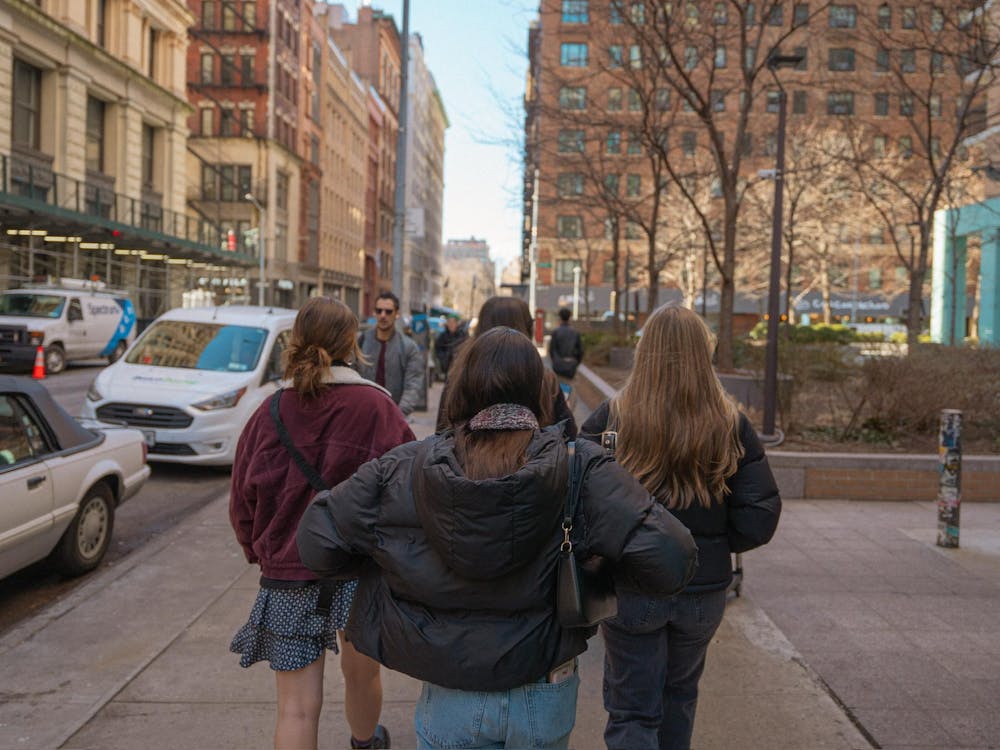I recently got carried away, as many 20-somethings do, while online shopping.
Thanks to the magical powers of online advertisements, a click on my trackpad led to more clicks on things and things and more things until finally I landed on a page selling cell phone cases.
In scrolling, I came across a black case with bold white print that said “TEXTING TO AVOID TALKING TO YOU” on the back.
I laughed. Ha! Snarky millennium humor at its finest.
But then I thought about just how accurate that little statement was. This phone case was putting into words what so many people are guilty of.
The truth is that we’re drifting away from the valuable tool of in-person interaction. We’d rather Facebook than face talk. We want to fill our language with black-and-white hashtags and at signs instead of hellos and how-are-yous.
And our phones give us the perfect excuse to avoid communicating in-person by allowing us to turn our eyes to the screen in situations we deem potentially uncomfortable or awkward.
College is all about connections, but we are crippling ourselves by replacing the essential day-to-day interactions that strengthen those connections – a simple nod, a wave, a smile -- with characters on a screen.
Those simple yet crucial interactions that deepen our relationships are dwindling.
I’m totally guilty of using my phone while walking from class to class. I’m busy and constantly connected on various social media platforms.
Saying “hi” can feel awkward and even silly for me.
But I’m working on it.
In an effort to become less reliant on digital interaction, I recently decided to put my phone away while walking on campus for an entire day.
I made a point to make eye contact with every person I passed. If I knew them, I’d shoot them a greeting.
My fingers itched to pick up the phone. I (somehow) resisted.
While I didn’t officially keep track of my findings, I’d guess that about three people in ten acknowledged me. The majority of people who did not acknowledge my smile, nod or “hello” were on their phones.
But what I felt by the end of the day was my biggest finding. By 6 p.m., I felt happier. I was more talkative when I got home. I felt more fulfilled. I’d said hello to people I hadn’t talked to since my freshman year three years ago, and that felt good. And, importantly, it was easier to avoid staring into the phone while walking the next day.
My little experiment reminded me of a campus tour I took while looking at where to spend my undergraduate years. At a certain college in Ohio, I had my phone out while walking across the campus.
A student stopped me and asked whether I knew about the unwritten rule of the “Middle Path.”
She informed me that it was tradition that the main walkway through campus remain a “no phone zone,” and kindly asked that I follow the rule.
I liked the idea. A safe haven to escape the never-ending stream of emails and status updates. A route designated to saying “hello.”
I’m not saying that we shouldn’t use our phones. They’re great tools. I’m also not saying we should pick one or the other as our communication of choice. It is certainly possible to be a Twitter maniac and also pay great in-person attention. But when one becomes an excuse to not do the other, it becomes a problem.
I urge you not to get so caught up in sending and receiving iMessages and Snapchats that you forget to use your voice to say “hello.”








